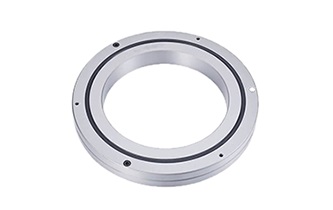Disassembly Methods and Precautions for Miniature Cross Roller Ring Bearings
Miniature Cross Roller Ring Bearing Disassembly Methods
Using a bearing puller
A bearing puller is a tool specifically designed to disassemble bearings. It can apply force evenly to avoid damaging the bearing. When using it, fix the puller's claws on the outer ring of the bearing, then gradually increase the force to move the bearing axially outward. This method is both safe and effective, especially suitable for precision miniature cross roller ring bearings.
Tapping method
If there are no professional disassembly tools available, the tapping method can be used. When using this method, place a spacer between the outer ring of the bearing and the shaft to protect the bearing from direct impact. Then, use a wooden or rubber hammer to gently tap the spacer, causing the cross roller ring bearing to gradually loosen. Be aware that the force should be moderate to avoid damaging the bearing or shaft due to excessive force.
Heating method
For some cross roller ring bearings that are tightly secured on the shaft and difficult to disassemble, the heating method can be used. By heating the shaft or bearing housing, the inner ring of the bearing expands due to heat, causing it to loosen. This method requires careful control of heating temperature and time to avoid overheating, which can damage the bearing or shaft. After heating, use a tool to gently tap the bearing to separate it.
Pulling method
The pulling method is another common bearing disassembly method. Using a puller, significant pulling force can be applied to help detach the bearing from the shaft.
Miniature Cross Roller Ring Bearing Disassembly Precautions
Avoid damage
During the disassembly process, both the bearing and the shaft are highly susceptible to damage. Therefore, appropriate measures should be taken to protect them. When using a bearing puller, ensure that the tool's contact surface with the bearing is flat to avoid localized overload. If using the tapping method, use soft materials such as copper or aluminum for the spacer to reduce the impact force on the cross roller ring bearing.
Control the force
Whether using disassembly tools or manual operation, controlling the force is crucial. Excessive force may deform the bearing or damage the shaft. During disassembly, gradually increase the force while observing the bearing's movement to ensure the bearing detaches evenly and smoothly.
Clean operations
The cleanliness of bearings directly affects their performance and lifespan. During disassembly, keep the work environment clean to avoid contamination by dust and debris. After disassembly, immediately clean the bearing and related components, using appropriate cleaning agents and tools to gently remove oil stains and residues.
Inspect the bearings
Careful inspection of the cross roller ring bearing after disassembly is an essential step. Check the raceways for wear or damage, verify the integrity of rolling elements, and inspect the cage for deformation. If any abnormalities are found, consider replacing the bearing to prevent future failures and equipment damage.
Use appropriate tools
Using inappropriate tools can cause bearing damage or disassembly failure. Ensure that professional tools matching the bearing's size and type, such as bearing pullers and extractors, are used. If resources are limited, ensure that the tools used provide adequate protection to avoid damaging the bearing.
Record and label
Recording the position and orientation of the bearing during disassembly is very important, especially when there are multiple types of identical cross roller ring bearings in the equipment. Use labeling pens or tags to record the bearing's original position to ensure accurate reassembly.
Environmental safety
Ensure the safety of the work environment and avoid disassembling bearings in wet or corrosive environments. Additionally, the tools and equipment used should meet safety standards, and operators should wear appropriate personal protective equipment.
Bearing storage
Proper storage of cross roller ring bearings after disassembly is necessary to prevent rust or contamination. Bearings should be stored in a dry, clean, dust-free environment, ensuring that they do not come into direct contact with the ground or other surfaces that may cause contamination.















 English
English  français
français  Deutsch
Deutsch  italiano
italiano 

















 English
English  français
français  Deutsch
Deutsch  italiano
italiano 






